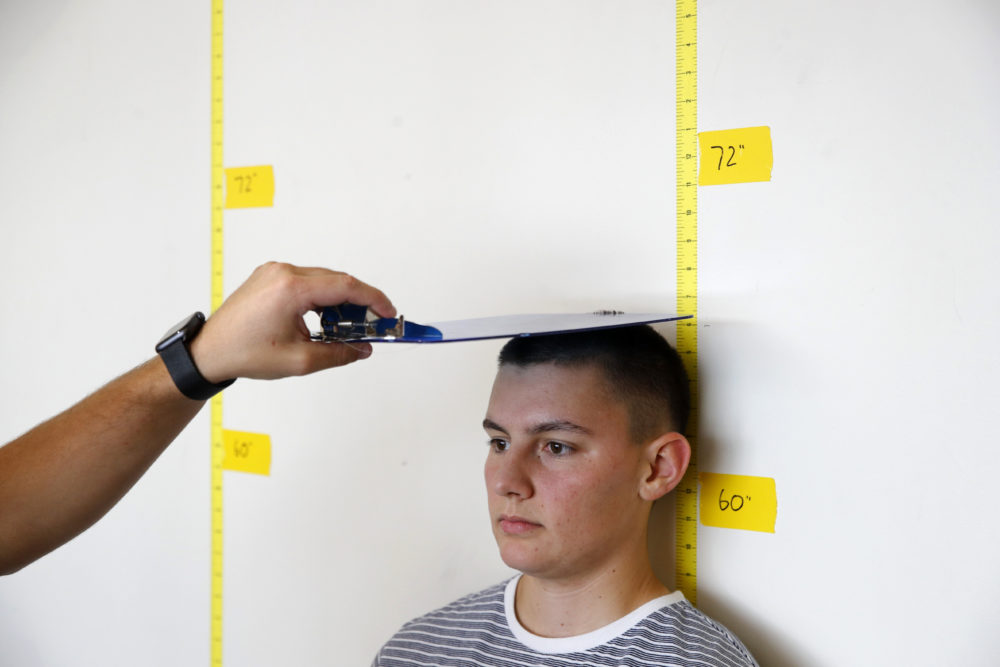Advertisement
The Same Genes Work Differently In Men And Women, Study Finds
Resume
The average man is roughly 5 to 6 inches taller than the average woman. Researchers are only beginning to find the genetic underpinnings of that difference, and it’s not just in the quintessential X and Y sex chromosomes.
Instead, a study out Thursday in the journal Science says some of the height discrepancy between sexes comes from subtle, but different ways males and females use hundreds of identical genes.
Because those genes are scattered across the entire genome, the discovery may have profound implications for genetic differences between men and women, not only when it comes to height, but also disease and medical research, says Leslie Leinwand a biologist at the University of Colorado Boulder who was not involved with the work.
"These differences haven’t been shown in such a global way,” she says. “I am extremely enthusiastic about the study, first off, because this area of sex differences in biology and genomes is woefully understudied."
The researchers were looking specifically for different ways men and women use the same genes. Genes are generally not “on or off,” says David Page, the senior author on the study and a geneticist at the Massachusetts Institute of Technology. Instead, they operate more like a volume knob. When the volume is turned up, the gene is read more and its instructions are carried out more often. That can determine the ways our bodies function and develop.
“We’re simply asking the question of each gene in the genome — about 12,000 genes, to be precise — is the volume set at the same level in males and females, or is it a little bit higher in one of the sexes?” Page says.
The research could help explain why there are discrepancies in health and disease between men and women that scientists don’t fully understand.
Page and his colleagues studied samples from 12 different tissues — including the brain, the heart, muscle and skin — and from five different species — humans, rats, mice, dogs and macaque monkeys. “Essentially, you grind up that tissue and capture all the genetic material from those cells,” says Sahin Naqvi, a biologist at Stanford University and the lead author on the study.
Then, the scientists were able to compare how often a particular gene’s instructions were being carried out on average between male and female samples.
From that, Page says they found hundreds of genes associated with height — or length, in the case of the rodents — that were being read differently by males and females. “[That] accounts for all of 12% of that 5-inch difference on average between males and females. There’s still a lot left to be explained,” Page says.
Though that might be a low estimate, Page adds, the samples came from grown adults, rather than children or adolescents in the middle of growth. “What we’re looking at is the adult residue of what was operating during the course of the development of the body.” Had the study sampled tissues from growing organisms, Page thinks they might have found a greater effect. There may also be non-genetic factors that contribute to the height discrepancy, Naqvi adds.
The work is an example of how there are expansive differences in males and females at the genetic level, UC Boulder's Leinwand says, and it could help explain why there are discrepancies in health and disease between men and women that scientists don’t fully understand.
“You come away from this paper saying, wow. This really spans the whole genome,” she says. “It could be interpreted that you have to think about sex differences by taking into account the whole genome and many, many different tissues of the body that could affect the entire biology of the organism.”
Some of those effects might include the fact that men and women process drugs differently or could explain why certain diseases, like autoimmune diseases and autism spectrum disorders, have disproportionate effects on different sexes, Leinwand says.
But medical research has been missing an opportunity to appreciate that, she says. “Women and female animals have not been included in many studies. This approach highlights that women are not just small men, and many people treat men and women as if they’re just different sizes,” she says. “Sex matters.”
This work, Leinwand and Page hope, will push medical research toward being more inclusive of different sexes.
“I think we are at present missing a lot because we operate with what is essentially a unisex model in biomedical research,” Page says. “There’s a great opportunity to understand these pervasive, if subtle, and fundamental differences most likely in every cell of the body.” And the health and treatment of all sexes may stand to gain from that, he says.
This segment aired on July 19, 2019.
